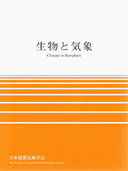In Japan, meteorological observatories are located mainly in urban areas, thus the surface air temperatures (SATs) observed at these sites contain the anthropogenic urban effect. For the estimation of such urban bias or for agro-meteorological usage, we need meteorological and climatological data that exactly reflects the agro-meteorological environment. This study aims to select monitoring AMeDAS stations located on agricultural land (referred to by the acronym “MAA”) in Japan for this purpose.
65 AMeDAS stations in every prefecture except for Tokyo were identified as MAAs. In selecting a MAA, we considered several factors such as the increasing rate of SAT (from 1980 to 2007), both the occupation rate of the agricultural land and that of the urban area around the MAA, the rate of expansion of the urban area around the agricultural land, and the local environment around the MAA. The increasing rates of the SATs of the selected MAAs were different in each region, with the values in western Japan being higher compared with those in northern Japan.
The increasing rates of the minimum SATs of 65 MAAs were a little lower than that of the 17 general meteorological observatories selected by the Japan Meteorological Agency, except for that of western Japan. These features show that the 65 MAAs weren’t strongly affected by urban bias, but we also found that SATs could be influenced by urban effects to some extent even for the AMeDAS stations located on agricultural land. That is, the increasing rates of the agricultural land SATs are possibly not always the same as those of background SATs in Japan.
View full abstract
